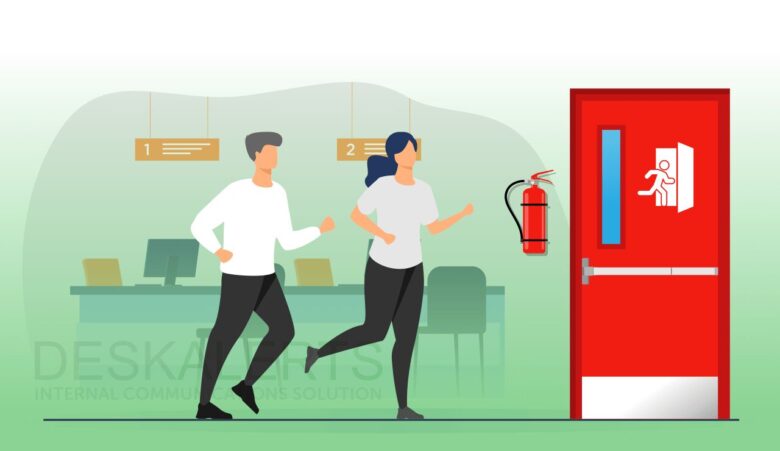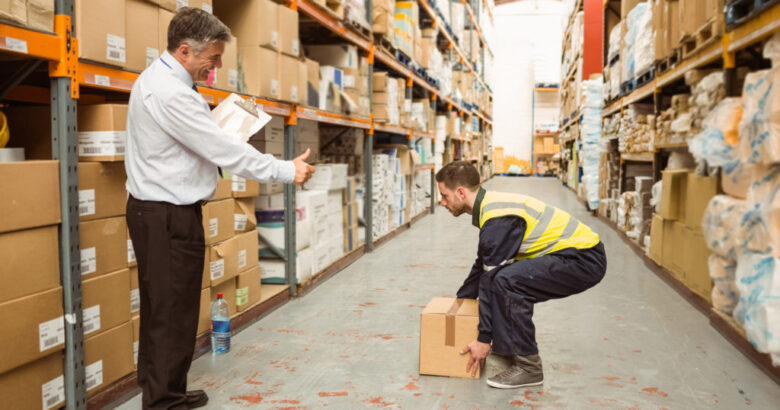The International Labor Organization is a dedicated institution that works for the welfare of employees engaged in all industries. According to an estimate, around 2.3 million employees suffer work-related injuries/illnesses during one year. The high number of casualties and illnesses associated with workplace injuries and safety measures has led to plenty of literature in this area. Most state and world organizations emphasize safety in workplaces and the role of employees in achieving it.
While it is true that the primary task of ensuring workplace safety is intrinsically linked to the employer’s actions, many believe that the employees can play a big part in it by staying aware. The awareness linked with workplace safety and ensuring workplace hazards are known to all is of paramount importance in today’s evolving world. Each workplace poses unique hazards, from bustling office spaces to bustling factory floors. Employees must learn the basics of safety and perform their duties vigilantly.
Organizations must encourage a culture of workplace safety among their employees. The culture of safety and workplace hazard awareness promotes productivity and protects employees from potential harm. One way to ensure this safety, according to Compass Cleaning Solutions, is the availability of neat and tidy premises. Such tidiness ensures minimum amounts of workplace hazards and less time spent by employees distracted by such inconveniences.
Other ways to minimize the chances of any injuries at the workplace include the following:
Contents
1. Understand Emergency Procedures

Source: yyppe.com
Employees must be aware of the company’s emergency policies, as it is the most important way to ensure the safety of the workplace. Such procedures and measures may include emergency exit plans, evacuation routes, and assembly points. Such plans also mention where the fire extinguishers are placed and where to find medical safety kits. Knowing the locations of the places to get help and ultimately evacuate can lead to a swift response in case of emergency, leading to minimal casualties and damages. Also, the employees can agree on an emergency-response team leader who can proactively guide others to safety in case of an emergency.
2. Use Personal Protective Equipment (PPE)
Another measure that is quite beneficial for employees, if properly implemented, is the use of PPE. PPE or personal protection equipment includes hard hats, safety goggles, and steel-toe shoes that protect you from falling or sharp objects around the workplace/site. PPE is usually mandatory in the construction field as it involves plenty of hazards that PPE can minimize the effects of; other industries must use appropriate PPE according to their job nature. Office places normally do not require the use of PPE, but in case of pandemics or airborne threats, the wearing of masks should become compulsory. Hence, the need of the hour is to ascertain the hazards of your workplace and take necessary precautions.
3. Practice Proper Lifting Techniques

Source: osha-safety-training.net
It is also wise to follow proper instructions when lifting heavy objects. The strain caused by such lifting can easily lead to severe injuries, including those of the backbone, which are generally irreversible in nature. Therefore, it is prudent to use your leg muscles and not your back when lifting up items. You should bend your knees so that the leg muscles are put to use instead of the back. Moreover, you shouldn’t venture out to pick heavy things if you don’t have the required strength.
4. Maintain Good Housekeeping
Keeping the work area nice and clean should be every employee’s responsibility. The employees should consider their workplace just as they treat their homes by being considerate of the surroundings and having a sense of responsibility towards the place’s cleanliness. Maintaining housekeeping may be the organization’s primary task, but if helped by the employees at large, it becomes easier and results in a safer workplace. An unclean and disorganized place becomes a haven for mosquitos and other dangerous parasites to thrive; hence it is important to keep your workplace clean. Good hygiene is the key to preventing you from becoming a vector of unwanted diseases from spreading; an organization must emphasize this point regularly.
5. Follow Equipment Safety Procedures

Source: ehsdailyadvisor.blr.com
With technological advances, employees are bound to come in contact with machinery that may be new for them to operate. It is thus vital to operate the machinery and/or equipment by following all the safety guidelines and protocols mentioned in the manual for such equipment. Before using any equipment, proper training to operate the equipment must be taken by the operator. Organizations must conduct these trainings and employees should attend and learn from them as diligently as possible. Extreme caution must be taken when operating such machinery, as any lapse in concentration can lead to disastrous consequences.
6. Report Hazards and Incidents
Employees must report hazards, near misses, or accidents that occur at the workplace. Such reporting may seem disadvantageous for the organization, but it helps ensure the proper implementation of safety procedures and addresses any loopholes in the procedure. Early reporting can help prevent accidents and improve overall safety. Moreover, a lesson-learned register can be created that can populate all the near misses and incident reports in one place so future strategies can cater to these hazards.
7. Take Regular Breaks and Manage Fatigue

Source: work-fit.com
Fatigue can impair concentration and reaction times, leading to accidents. Take regular breaks during long shifts, get enough rest outside of work, and practice good sleeping habits for a generally calmer mind and to manage fatigue effectively. Employees who work extra hours and without any adequate sleep are known to have lower productivity. Fatigue is the main cause of many incidents at workplaces, as employees are distracted by sleep or tiredness.It’s also vital to ensure that all your employees have submitted their PTO requests, allowing them the necessary time off to recharge and rest.
Prioritizing workplace safety is fundamental to a thriving and productive work environment. By adopting the seven safety tips discussed here, employees can actively contribute to preventing accidents and injuries while fostering a culture of vigilance and responsibility. Remember, safety is not an isolated responsibility but a collective effort involving each workforce member. The collective strategizing of the organization and the implementation by employees bring about a culture of workplace safety.
